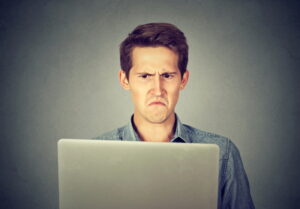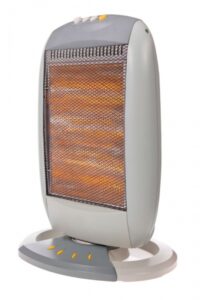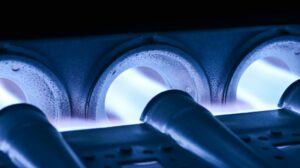 A gas furnace works by combusting natural gas sent to the burners, which produce hot combustion gas the heater uses to warm the air entering the ductwork of the home. In most modern furnaces, an electronic ignition system lights the burners once gas starts flowing to them, and the burners remain on as long as necessary for the furnace to heat the house to the desired temperature.
A gas furnace works by combusting natural gas sent to the burners, which produce hot combustion gas the heater uses to warm the air entering the ductwork of the home. In most modern furnaces, an electronic ignition system lights the burners once gas starts flowing to them, and the burners remain on as long as necessary for the furnace to heat the house to the desired temperature.
You may find yourself in a colder house if the burners in your furnace don’t remain lit but keep going out early. There may be a simple explanation for this problem, but in many cases you’ll need to call a professional for furnace service Brighton, MI. Working with a gas furnace, as with any gas-powered appliance, is potentially dangerous for someone who isn’t licensed and equipped for the job.
What might cause the burners in your furnace to go out early? Here are some possibilities…

 The average low temperature during our winters is 15°F. Some other parts of the Midwest get even colder, but 15°F is still
The average low temperature during our winters is 15°F. Some other parts of the Midwest get even colder, but 15°F is still  When you’re considering getting a new heating system for your home, you’ll probably be looking into a forced-air heater of some kind: an electric furnace, a gas furnace, a heat pump. These heaters all raise the temperature of the air and then send that air through ductwork to the rooms. If your home already has ductwork, then you’ll almost certainly will be looking into a forced-air heater.
When you’re considering getting a new heating system for your home, you’ll probably be looking into a forced-air heater of some kind: an electric furnace, a gas furnace, a heat pump. These heaters all raise the temperature of the air and then send that air through ductwork to the rooms. If your home already has ductwork, then you’ll almost certainly will be looking into a forced-air heater. If you looked at your heating bills during the previous winter and wondered why they seemed higher than normal, this post can help. We know you probably spent more time in your home last winter than usual (pretty much everyone did), so that will account for some of the increase in how much you paid for heat. But if you factor out that, as well as any rise in energy costs, and the price still seems too steep, then there are several steps you can take.
If you looked at your heating bills during the previous winter and wondered why they seemed higher than normal, this post can help. We know you probably spent more time in your home last winter than usual (pretty much everyone did), so that will account for some of the increase in how much you paid for heat. But if you factor out that, as well as any rise in energy costs, and the price still seems too steep, then there are several steps you can take. A common question we hear from customers is when to replace their natural gas furnace. Homeowners want to get the most years possible out of their investment in a central heating system, but they also know that no furnace can last forever. At some point, a furnace will become less effective, less energy efficient, and even less safe. At what point is a furnace replacement ready?
A common question we hear from customers is when to replace their natural gas furnace. Homeowners want to get the most years possible out of their investment in a central heating system, but they also know that no furnace can last forever. At some point, a furnace will become less effective, less energy efficient, and even less safe. At what point is a furnace replacement ready? When the winter arrives in Michigan, central heaters in homes across the state come on to keep people warm. You can’t afford to go without some kind of heating system for your home if you want to make it through the winter. Unfortunately, we can tell you plenty of stories about people who tried to patch together a “cheap” solution to home heating when their furnace or other central heater went out.
When the winter arrives in Michigan, central heaters in homes across the state come on to keep people warm. You can’t afford to go without some kind of heating system for your home if you want to make it through the winter. Unfortunately, we can tell you plenty of stories about people who tried to patch together a “cheap” solution to home heating when their furnace or other central heater went out.  Fall started officially on the 22nd of September, but most people think of the season starting after Labor Day, or when the calendar leaf flips over to September. Now it’s almost October and the reality of fall (and a certain even colder season that follows it) will strike homeowners. They’ll start making cold weather preparations. One of the most important preparations is arranging for professional HVAC technicians to do a maintenance inspection and tune-up on their heating system.
Fall started officially on the 22nd of September, but most people think of the season starting after Labor Day, or when the calendar leaf flips over to September. Now it’s almost October and the reality of fall (and a certain even colder season that follows it) will strike homeowners. They’ll start making cold weather preparations. One of the most important preparations is arranging for professional HVAC technicians to do a maintenance inspection and tune-up on their heating system. The cold weather may still linger, but it won’t linger for much longer as we get deeper into spring. You’ll soon turn on the AC and stop using the furnace for many months. This is the time to schedule regular air conditioning maintenance with our technicians to ensure your AC is in peak shape for the summer heat.
The cold weather may still linger, but it won’t linger for much longer as we get deeper into spring. You’ll soon turn on the AC and stop using the furnace for many months. This is the time to schedule regular air conditioning maintenance with our technicians to ensure your AC is in peak shape for the summer heat. As we switch into spring and focus on air conditioning systems, it’s easy to forget about the furnaces that just put in a hard winter keeping our homes warm. Now, your furnace doesn’t have feelings, but we recommend you give some thought to its future at this time—such as whether it has a future in your house.
As we switch into spring and focus on air conditioning systems, it’s easy to forget about the furnaces that just put in a hard winter keeping our homes warm. Now, your furnace doesn’t have feelings, but we recommend you give some thought to its future at this time—such as whether it has a future in your house.